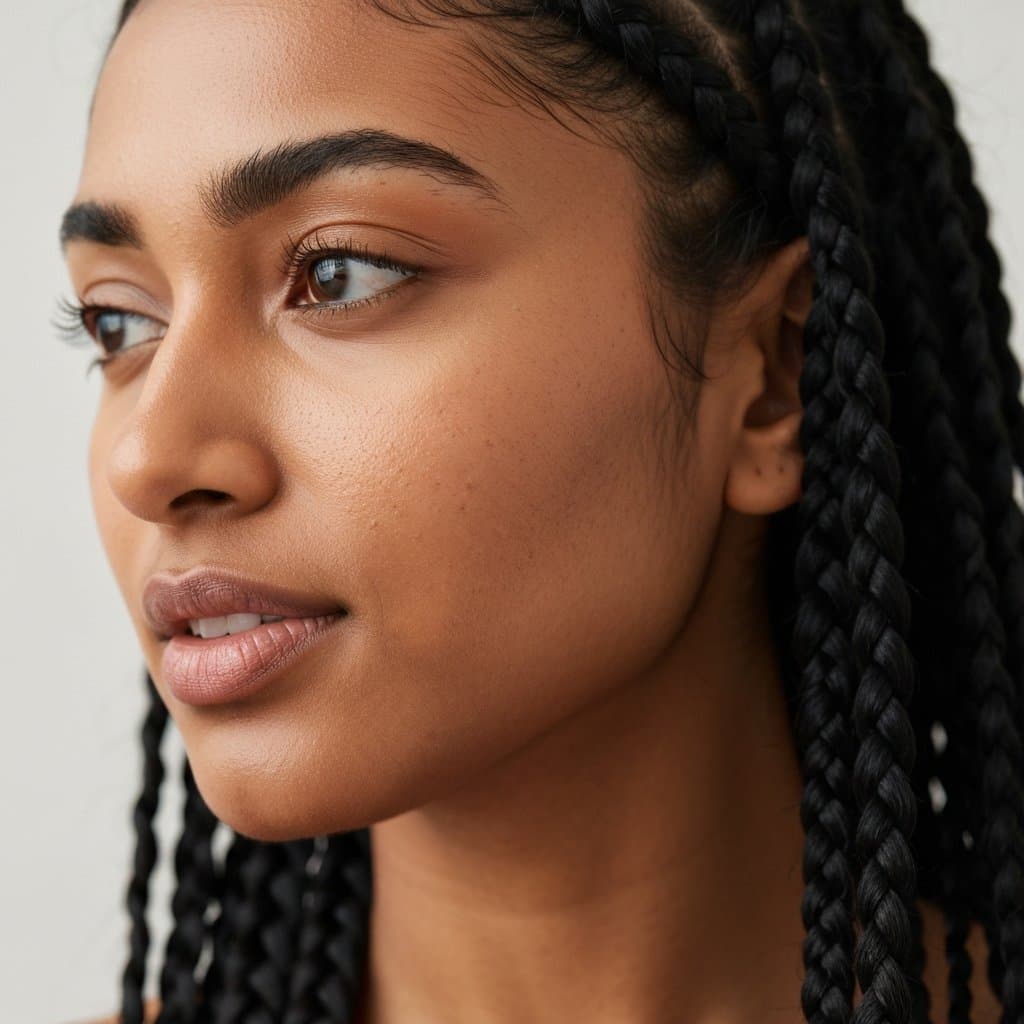The Complete Guide to Hair Extensions: Types, Care, and Styling | Achieve Your Dream Hair
Introduction: Unlock Your Hair's Full Potential
Hair extensions have revolutionized the beauty industry, offering an instant solution for anyone dreaming of longer, fuller, or more vibrant hair. Once a secret reserved for celebrities on the red carpet, high-quality hair extensions are now an accessible luxury that can dramatically transform your look, boost your confidence, and open up a world of new styling possibilities. Whether you're looking to add dramatic length for a special event, create volume in fine hair, or experiment with color without commitment, there’s an extension method perfectly suited for your goals. This comprehensive guide will walk you through everything you need to know about the world of hair extensions. From understanding the difference between human and synthetic hair to exploring the various application methods, mastering care routines, and learning pro styling tricks, consider this your ultimate resource for achieving and maintaining the hair of your dreams.

Understanding the Basics: Human Hair vs. Synthetic Hair
The first and most crucial decision in your hair extension journey is choosing the type of hair. The quality, feel, and longevity of your extensions depend entirely on this choice. The market is dominated by two main categories: human hair and synthetic hair, each with its own distinct advantages and considerations.
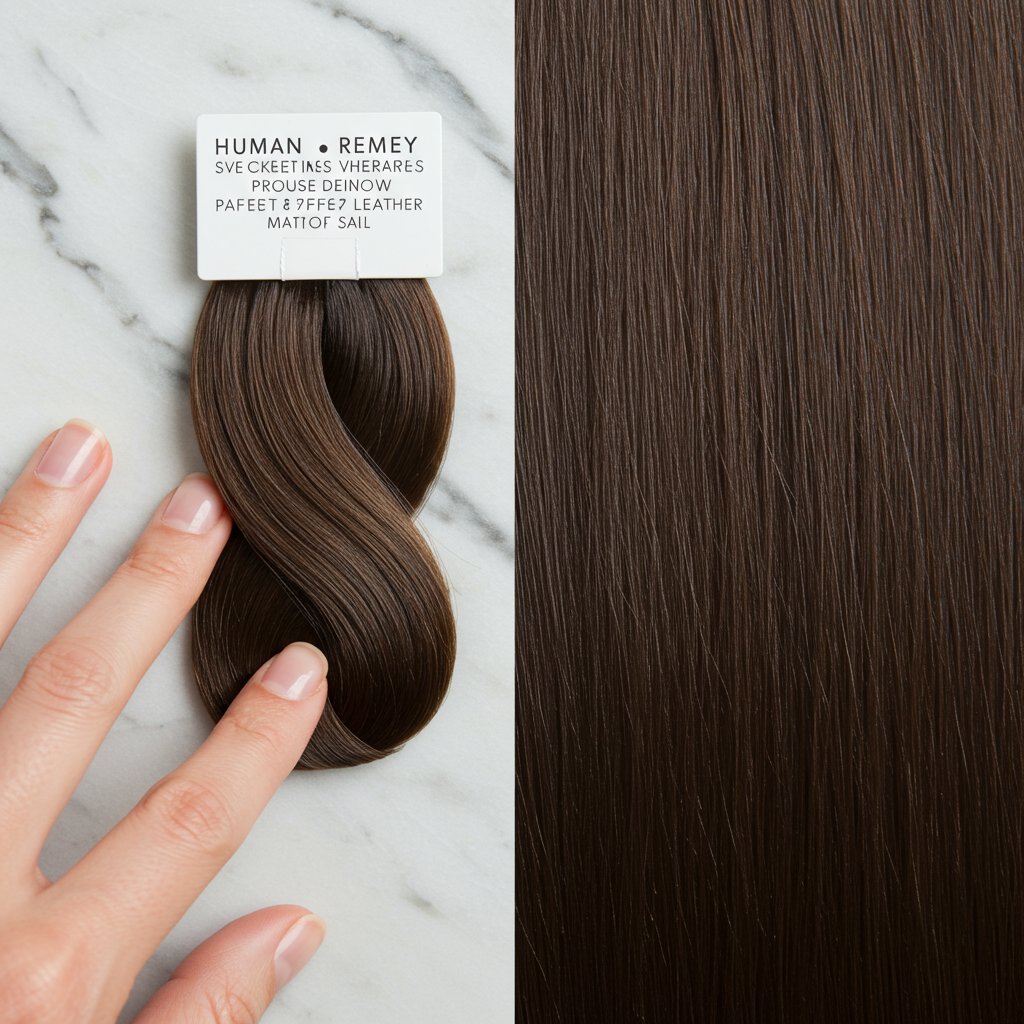
The Unmatched Quality of Human Hair Extensions
Human hair extensions are the gold standard for a reason. They are made from 100% real human hair, which means they look, feel, and behave just like your own. The highest grade is known as Remy human hair, where all cuticles are kept intact and aligned in the same direction. This meticulous process prevents tangling and matting, resulting in a smoother, shinier, and more natural appearance. Because it's real hair, you can color, perm, and heat style it just as you would your own. While the initial investment is higher, the durability and natural blend of human hair extensions make them a worthwhile choice for long-term wear, offering a seamless and undetectable finish.The Affordability and Style-Retention of Synthetic Hair
Synthetic hair extensions are crafted from various man-made fibers, such as kanekalon or toyokalon, which are designed to mimic the appearance of real hair. The primary advantage of synthetic hair is its affordability and style memory. These fibers come pre-styled (e.g., straight, wavy, or curly) and will hold that shape regardless of weather or washing. However, this also means they cannot be restyled with heat, as curling irons or flat irons can melt the fibers. While high-quality synthetic options have improved significantly, they often have a slightly different texture and a higher sheen than human hair, which can sometimes make them look less natural. They are an excellent option for temporary styles, clip-ins for special occasions, or for trying out bold colors.
A Deep Dive into Hair Extension Types
Once you've chosen between human and synthetic hair, the next step is selecting an application method. This choice depends on your lifestyle, budget, hair type, and desired commitment level. A professional stylist can provide a personalized recommendation, but understanding the most popular methods is key to making an informed decision.
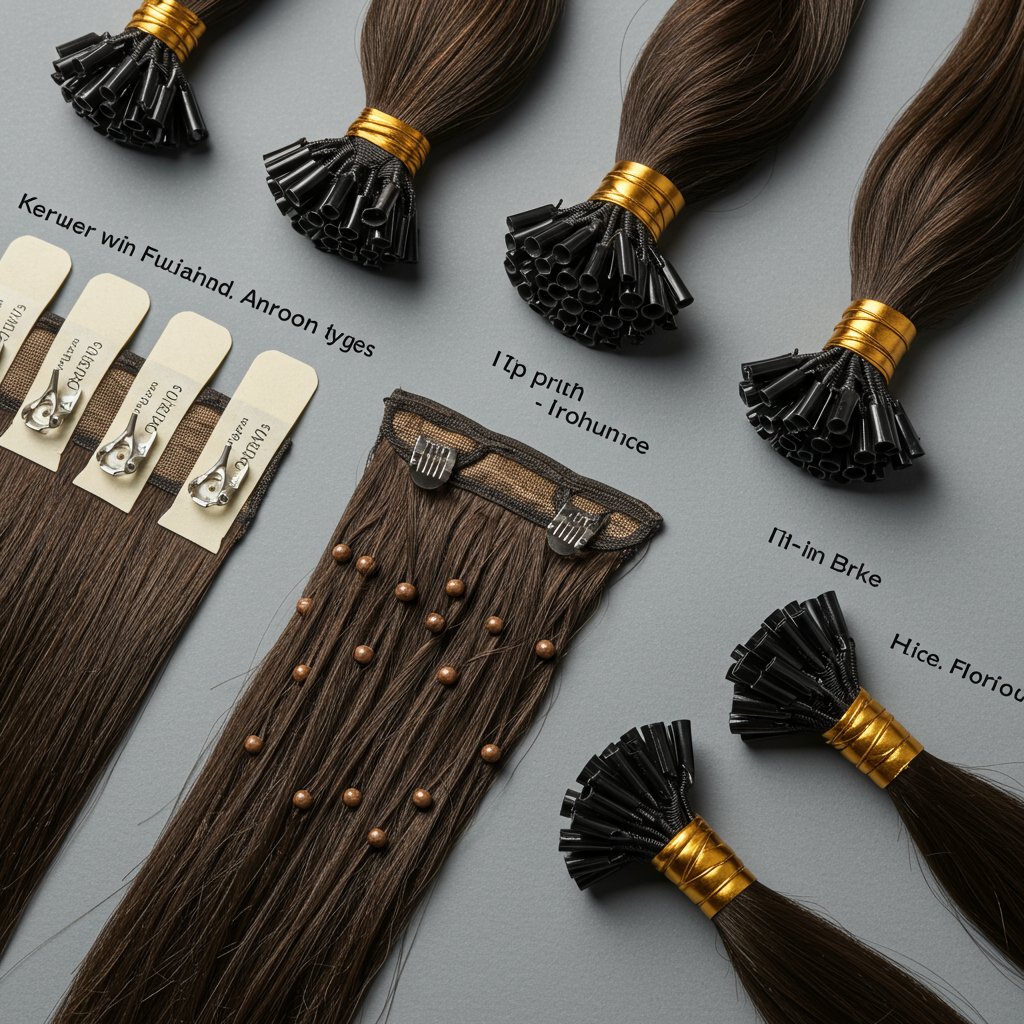
Clip-In Extensions: The Ultimate Flexibility
Clip-in extensions are wefts of hair with small, pressure-sensitive clips sewn onto them. They are the least permanent method and can be applied or removed in minutes without professional help. This makes them perfect for special events, occasional wear, or for those who want to experiment with length and volume without any long-term commitment. They offer incredible versatility but must be removed before sleeping or showering.Tape-In Extensions: The Seamless Solution
Tape-in extensions consist of wefts of hair attached to a thin, transparent polyurethane adhesive tab. A stylist sandwiches a thin section of your natural hair between two of these wefts. The application is quick, requires no heat or tools, and lays flat against the head, creating a very natural and seamless look. They are lightweight and comfortable, making them suitable for most hair types, including fine hair. Maintenance involves a "move-up" appointment every 6-8 weeks, where the stylist removes and reapplies the wefts closer to the scalp.Sew-In/Weave Extensions: The Durable Classic
A sew-in, or weave, is a traditional and highly durable method. It involves creating a small, tight braid, or "track," with the client's natural hair, and then sewing wefts of extension hair onto this braid. It's a great option for those with thick, coarse hair as it can handle the tension of the braids. This method requires no glue or heat and, when installed correctly, can be very protective of the natural hair underneath. Maintenance is required every 6-8 weeks to tighten and reposition the wefts.Fusion & Pre-Bonded Extensions (Keratin Bonds): The Strand-by-Strand Method
Fusion extensions, also known as keratin or K-tip extensions, involve attaching individual strands of extension hair to small sections of your natural hair using a keratin-based adhesive. A heating tool is used to melt the bond, fusing it securely to your hair. This strand-by-strand application allows for 360-degree movement and a very discrete, natural look, making it ideal for wearing hair up. This is a long-lasting method, often lasting 3-5 months with proper care, but the application and removal processes are lengthy and must be done by a highly skilled professional.Micro-Link/I-Tip Extensions: The No-Heat, No-Glue Option
Micro-link extensions, also known as I-tip or micro-bead extensions, are another strand-by-strand method that uses no heat or glue. Small bundles of extension hair (I-tips) are attached to your natural hair using a tiny bead or copper link, which is then clamped shut with a special tool. This method allows for easy reuse of the hair and is considered gentle on the natural hair. They require maintenance appointments every 6-8 weeks to push the beads back up toward the scalp as your hair grows.
The Consultation and Application Process: What to Expect
Choosing to get hair extensions is a significant beauty investment, and the process should begin long before you sit in the salon chair. A thorough consultation and a professional application are the cornerstones of a successful and beautiful result that protects the health of your natural hair.

Finding the Right Stylist
The single most important factor for a flawless hair extension experience is your stylist. Look for a certified and experienced professional who specializes in the extension method you are interested in. Check their portfolios, read client reviews, and don't hesitate to ask about their training and qualifications. A great stylist will prioritize the health of your hair above all else.The Importance of a Professional Consultation
During your consultation, the stylist will assess your hair type, density, and health to determine if you are a suitable candidate. This is your opportunity to discuss your goals, lifestyle, and budget. The stylist will perform a color and texture match, using swatches to find the perfect blend for a seamless look. They will explain the pros and cons of each suitable method, detail the required maintenance, and provide a clear quote for the service. This is a collaborative process designed to ensure you are completely comfortable and informed before proceeding.
The Ultimate Hair Extension Care Guide: Preserving Your Investment
Proper care is non-negotiable for keeping your hair extensions looking beautiful and ensuring the health of your natural hair. Your maintenance routine will be slightly different than what you're used to, but these simple habits will extend the life of your investment.
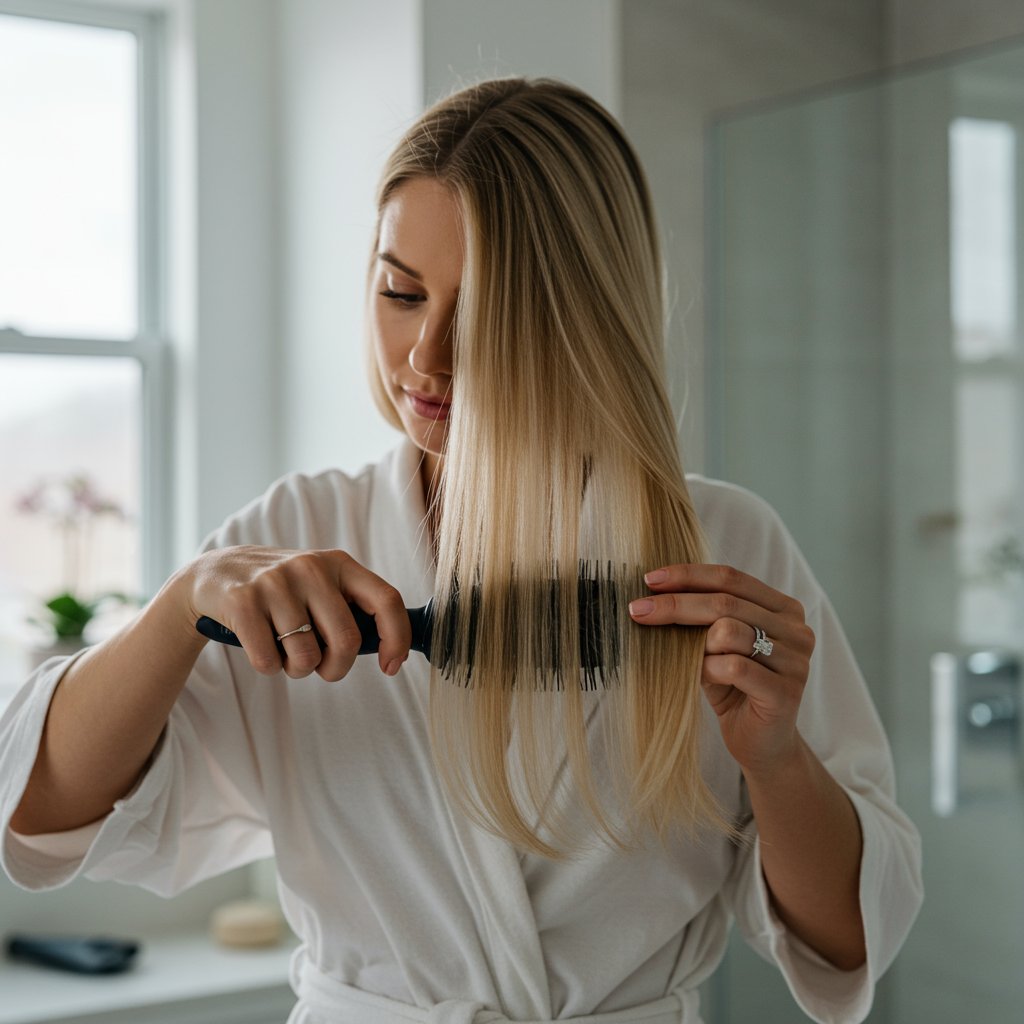
Washing and Conditioning
Always use sulfate-free and paraben-free shampoos and conditioners recommended by your stylist, as harsh chemicals can weaken the bonds and dry out the extension hair. When washing, tilt your head back and let the water run down the hair shaft. Gently massage the shampoo into your scalp, but avoid scrubbing vigorously at the roots or bonds. Apply conditioner only from the mid-lengths to the ends, keeping it away from the attachment points (bonds, tapes, or beads) to prevent slippage.Brushing and Detangling
Tangles are the enemy of hair extensions. To prevent them, brush your hair multiple times a day. Use a special extension brush, like a loop brush or a soft bristle brush, that won't snag on the bonds. Start by brushing the ends and gradually work your way up to the roots. Always hold the hair at the base (where the extensions are attached) to support the bonds and prevent tension on your scalp.Sleeping with Hair Extensions
Never go to bed with wet hair extensions, as this can cause severe matting and tangling at the root. Before sleeping, ensure your hair is completely dry and gently brush it out. Secure your hair in a loose braid or a low ponytail to prevent friction and tangling while you sleep. A silk or satin pillowcase can also help reduce friction and keep your hair smooth.
Styling Your Hair Extensions Like a Pro
One of the best parts of having hair extensions is the endless styling potential. With the right techniques, you can create any look you desire while keeping your extensions in pristine condition.

Heat Styling Safely
If you have human hair extensions, you can use heat tools like flat irons, curling wands, and blow dryers. However, it's crucial to always apply a high-quality heat protectant spray first to shield both your natural hair and the extensions. Use a low to medium heat setting and never apply direct heat to the bonds, tapes, or beads, as this can cause them to melt, weaken, or slip.Creating Seamless Blends
The key to a natural look is a seamless blend between your hair and the extensions. A professional stylist will expertly cut and layer the extensions to blend them with your natural hair length and texture. When styling at home, you can enhance this blend by curling or waving both your natural hair and the extensions together. This helps the different lengths merge flawlessly.Versatile Hairstyles: From Ponytails to Updos
Modern extension methods are designed to be discreet, allowing for versatile styling. For high ponytails with methods like tape-ins or I-tips, be mindful of the weft or bond placement to ensure they remain hidden. Gentle teasing at the root can help cover any attachments. For elegant updos, the strand-by-strand methods like K-tips offer the most flexibility, as they move just like your natural hair.
Maintenance and Removal: Keeping Your Natural Hair Healthy
To ensure the longevity of your extensions and the health of your own hair, regular maintenance and professional removal are essential parts of the process. Skipping these steps can lead to damage and matting.
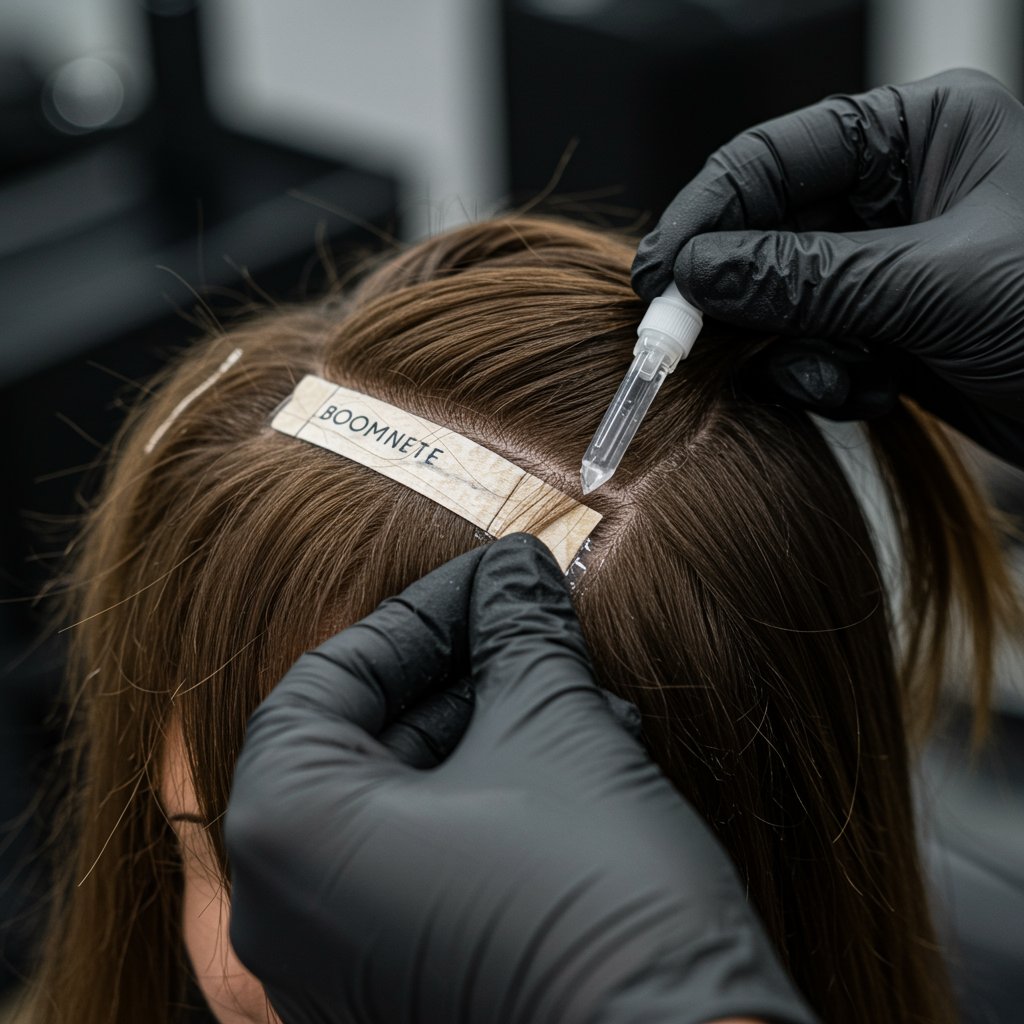
Regular Maintenance Appointments
Most semi-permanent hair extension methods require a maintenance appointment, often called a "move-up" or "tightening," every 6 to 8 weeks. As your natural hair grows, the attachment points move further down from the scalp. During these appointments, your stylist will safely remove the extensions, clarify your hair, and then reapply them closer to the root. This is also an opportunity for the stylist to check the health of your scalp and hair.The Professional Removal Process
Attempting to remove semi-permanent extensions yourself can cause significant breakage and damage to your natural hair. Always return to a certified professional for removal. They have the proper tools and solvents to gently dissolve the adhesive or open the links without pulling or harming your hair. After removal, it's a good idea to give your natural hair a deep conditioning treatment and a small trim to keep it healthy.
Frequently Asked Questions About Hair Extensions
Can hair extensions damage my natural hair?
When applied, maintained, and removed by a qualified and experienced professional, hair extensions should not cause damage to your natural hair. Damage typically occurs from improper application, poor maintenance, or attempting to remove them at home. Choosing the right method for your hair type is also crucial for preventing strain.
How long do different types of hair extensions last?
The lifespan of hair extensions varies by type. Clip-ins are for temporary use. Tape-ins last for 6-8 weeks before needing a move-up. Sew-ins also last 6-8 weeks. Micro-links require maintenance every 6-8 weeks. Fusion/K-tip extensions are the longest-lasting, often going 3-5 months before needing removal and reapplication.How much do hair extensions typically cost?
The cost varies widely based on the type of hair (human vs. synthetic), the length and volume desired, the application method, and the salon's location and expertise. The price can range from a few hundred to several thousand dollars. Always get a clear quote during your consultation that includes the cost of the hair, application, and any necessary maintenance.Can I color my hair extensions?
You can color 100% human hair extensions, but it's generally recommended to only deposit color (go darker), not lift it (go lighter), as bleaching can compromise the hair's integrity. It's best to have a professional stylist color the extensions before they are installed to ensure a perfect match and even result. Synthetic hair cannot be colored.How do I choose the right color and texture?
A professional stylist will perform a precise color and texture match during your consultation. They will use a color ring with dozens of shades to find the perfect combination that blends seamlessly with your natural hair, often using multiple shades to create a dimensional, natural look. They will also match the extension texture (straight, wavy, curly) to your own.Can I swim or work out with extensions?
Yes, you can, but with precautions. Before swimming, wet your hair with clean water and apply a leave-in conditioner. Then, put it in a braid to prevent tangling from chlorine or salt water. Rinse your hair thoroughly immediately after. When working out, secure your hair in a braid or ponytail to keep it managed and away from sweat, and wash it afterward to prevent buildup at the roots.
Conclusion: Your Journey to Beautiful Hair
Hair extensions offer a powerful and transformative way to achieve the length, volume, and style you've always wanted. The key to a successful experience lies in education, professional guidance, and dedicated care. By understanding the different types of hair and application methods, you can make an informed choice that suits your hair and lifestyle. Committing to a proper care routine will ensure your extensions remain beautiful and your natural hair stays healthy. If you're ready to explore the possibilities, the first step is to schedule a consultation with a certified extension specialist. They can answer your questions, assess your hair, and create a customized plan to help you confidently begin your journey to truly spectacular hair.

